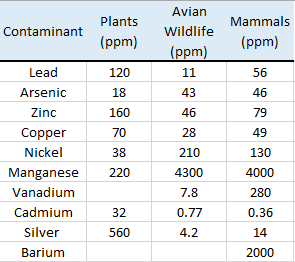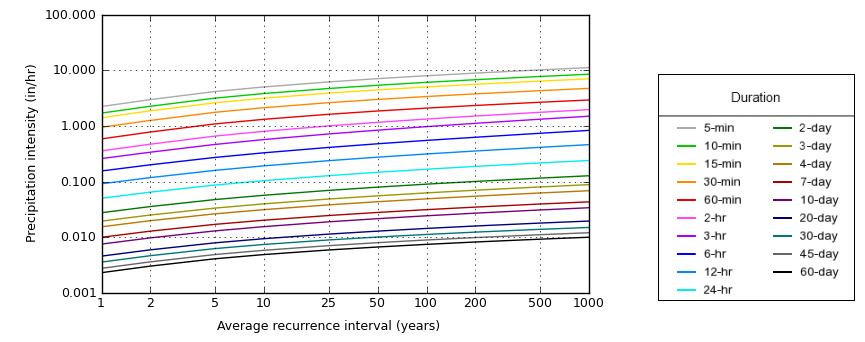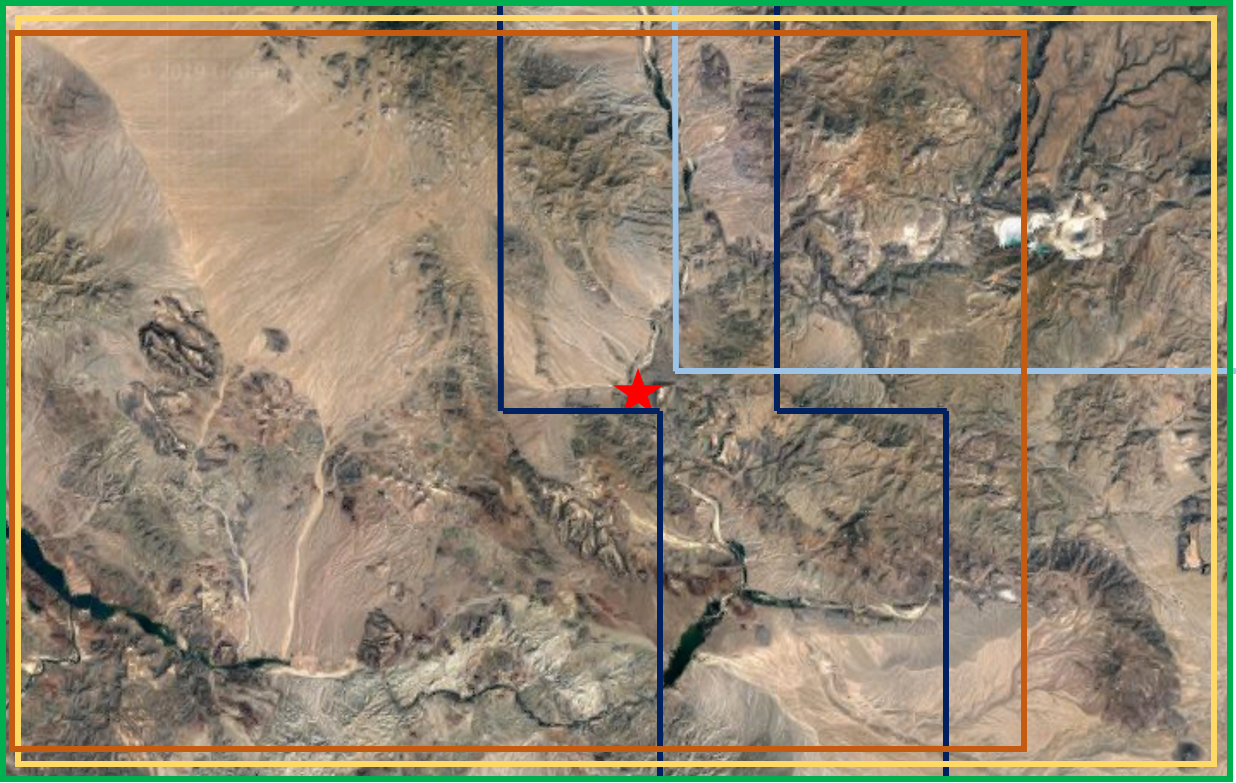Ecological Risk Assessment
Selecting Contaminants of Concern
In the table below, the standards for plants, mammals, and avian wildlife are listed, and these were the values used when determining the COCs for the ecological risk assessment.

The XRF data and these standards were utilized to highlight cells once more based on ecological standards to determine what elements posed the highest risk to plants, mammals, and avian wildlife. These were then organized into the table below, which shows how many samples affect each category of biota at Signal Mill. This determined that 9 of the 10 possible elements of concern will be focused on as COCs in the ecological assessment. The ecological assessment will focus on; lead (Pb), zinc (Zn), copper (Cu), nickel (Ni), manganese (Mn), vanadium (V), barium (B), cadmium (Cd), and silver (Ag).

The habitats and native home ranges of many endangered and threatened species coincide with the Signal Mill site. Due to the ephemeral flow of the Big Sandy, the native tree cover, and sandy vegetative patches around the river; many species have found parts of the ecosystem conditions favorable. Just outside of the landscape of trees and brush around the Big Sandy River, is a more arid, desert ecosystem which finds itself home to other biota as well.
The ecological risk maps of contamination show that many of the areas around the abandoned mill site show that the COCs are starting to migrate towards the Big Sandy and further downstream of it due to the rainfall events that occur at the site. The figure below shows projections of various storm recurrence intervals and the associated values for that storm occurring within a specified duration. The shorter duration interval combined with the largest storm recurrence interval produces the highest precipitation intensity.

These rainfall events have already started the migration of contaminants from the abandoned mill and mine tailings towards the Big Sandy. Since all of the COC’s exceed at least one, if not more standards for the biota, it will negatively impact ecosystems farther downstream alongside the endangered and threatened species living in and around the site currently.
Endangered species around the site include the Arizona Cliffrose, California Least Tern, and the Southwestern Willow Flycatcher while threatened species include the Desert Tortoise and the Northern Mexican Gartersnake. The figure below shows the area these species are known to be in relation to Signal Mill. The red star in the middle is the abandoned mill site and then each of the colored lines signifies the range of the endangered or threatened species relative to the area directly around the site. Navy lines are the Southwestern Willow Flycatcher, light blue for Arizona Cliffrose, orange for the California Least Tern, green for the Desert Tortoise, and yellow for the Northern Mexican Gartersnake.

So although the site is in the southern desert area of Arizona, it is still habitat for a wide variety of species, and specifically endangered ones like these. This poses an ecological risk because of the high concentration and harm that will come about to these species due to contaminant migration and potential uptake.
The Desert Tortoise is at its most active period in the year after the seasonal rains take place and spends its more inactive time in burrows and rock shelters to help it regulate body temperature and prevent water loss. This is the tortoise’s way of avoiding the extreme summer heat the desert can have. Since it comes out during times of rainfall, this poses a serious risk to the tortoise’s living near Signal Mill and south of it. It is seen in the ecological maps that migration of contaminants has started to occur on the site, and would most notably be after these rainfalls since the site has hills. This pushes all the water down through the site and mine tailings before reaching the Big Sandy and continuing south. The diet for the tortoise consists mainly of plants, annual flowers, and new growths of cacti, but rocks and soil can be ingested as well. The high concentrations of COCs are present in the soil itself, put also pose a great risk to plants which the tortoise regularly feeds on. There is a high risk for this threatened species numbers to dwindle further due to the ingestion of highly contaminated, untreated soil as well as through bioaccumulation in plants over time.
The Arizona Cliffrose is found in only four areas within the state, one of those being Burro Creek that flows into the Big Sandy near the Signal Mill site. The Arizona cliff rose can often be found among very rocky soils throughout central Arizona. Due to the small, localized habitats and small populations this plant is extremely vulnerable and as such, listed as endangered. Mineral exploration and development is a major threat to the species, and the population near Signal could have been impacted throughout the duration of the mill operations. This species is already under monitoring and has a recovery plan in place but is still of concern.
In the figure below, it shows images of these five endangered and threatened species. These species use the area as habitat, corridors during migratory periods, and a place for nests during reproduction, as well as feeding on the biota that grows. The flower depicted in the A square is the Arizona Cliffrose. The bird depicted in square B is the Southwestern Willow Flycatcher. The bird depicted in square C is the California Least Tern. The tortoise depicted in square D is the Desert Tortoise. The snake depicted in square E is the Northwestern Mexican Gartersnake.
![[A] Arizona Cliffrose (endangered), [B] Southwestern Willow Flycatcher (endangered), [C] California Least Tern (endangered), [D] Desert Tortoise (threatened), and [E] Northwestern Mexican Gartersnake (threatened)](Images/animalpics.png)
Bioaccumulation will also adversely affect species in the area, but especially those higher up on the food chain. The concentrations, especially those of lead, are extremely high on the site. If plants uptake contaminated water from the site, then an herbivore eats that plant prior to being eaten by a predator, etc… Eventually, those high on the food chain could see adverse effects because of it. Most occurrence of bioaccumulation show these effects occurring in relation to reproduction.